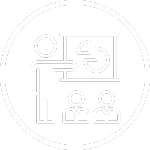Now Offering Spanish Safety Training!

Now Offering Spanish Safety Training!
General Safety
Documentation and Procedures
FSDAVCFEBFEVSDDVFSD
FSDAVCFEBFEVSDDVFSD
FSDAVCFEBFEVSDDVFSD
General Safety - Documentation and Procedures
Establishing Clear Safety Documentation and Procedures

Standardizing clear safety documentation and procedures is crucial for maintaining compliance and enhancing workplace safety. These documents outline safety protocols, roles, and responsibilities, ensuring that employees understand their duties and follow proper guidelines. Effective communication of these procedures reduces misunderstandings and promotes consistent adherence to safety standards.
Regularly updating safety documents is vital to ensure they align with evolving regulations and workplace conditions. This includes revising protocols based on new risks or incidents. A well-structured documentation system helps organizations track safety measures and respond effectively to potential hazards, creating a safer work environment for all employees.

What Does Clear Safety Documentation Look Like?
Establishing an efficient safety documentation system requires clear guidelines, consistent communication, and thorough implementation. Each document should detail specific safety protocols, outline employee responsibilities, and provide step-by-step procedures for managing potential hazards. This level of clarity ensures that everyone within the organization fully understands their roles and responsibilities, promoting accountability and adherence to safety measures.
Safety documentation must be updated regularly to reflect any changes in regulations, evolving workplace conditions, or emerging risks. For instance, enhancing policy manuals helps keep employees informed about the latest safety protocols and training requirements. By staying proactive, organizations can maintain compliance while adapting to new safety challenges, which ultimately reduces risks and supports a safer environment.
To maximize the effectiveness of safety documents, they should be easily accessible to all employees. Providing thorough training on how to understand and use these documents is crucial for successful implementation. Employees should be encouraged to review safety procedures regularly, keeping them informed and prepared to manage workplace hazards effectively.
Effective Procedures for Complete OSHA Compliance

Clear documentation of safety procedures is essential for effective risk management. Each procedure should include detailed steps for handling equipment, managing hazardous materials, and responding to emergencies. By maintaining updated construction safety protocols, organizations can ensure that employees are prepared for specific industry risks. This approach not only promotes compliance but also improves overall safety awareness among staff, creating a safer work environment.
Regular training sessions are crucial to reinforce safety procedures and ensure employees understand how to implement them effectively. Training should cover essential topics like emergency response, personal protective equipment (PPE) usage, and proper hazard communication. Employees who actively engage in these training sessions are more likely to retain the information and apply it during real-world scenarios. Consistent review of these procedures ensures that safety measures are practical and adaptable to evolving workplace needs.

Proper safety documentation also involves tracking procedural changes and adjustments made over time. Documenting these changes helps identify patterns in safety challenges, allowing organizations to develop targeted solutions. For instance, implementing safety program development guides ensures that updated procedures are communicated effectively. This structured approach not only clarifies why changes are necessary but also highlights their benefits for improving safety outcomes and compliance.
Monitoring the effectiveness of safety procedures is vital for continuous improvement. This includes evaluating incident reports, conducting regular safety audits, and analyzing employee feedback to identify areas needing refinement. Adjustments based on these findings help tailor safety strategies to specific risks, ensuring they remain practical and effective. Actively involving employees in this process fosters a sense of shared responsibility for maintaining a safe workplace. This engagement encourages better compliance, reduces risks, and promotes a proactive safety culture throughout the organization.
Frequently Asked Questions
Frequently Asked Questions
What types of documentation and procedures can Nain and Associates help with?
Nain and Associates can assist with a variety of documentation and procedures required for OSHA compliance. This includes preparing OSHA 300 logs, developing written safety programs, and ensuring proper documentation of employee training. They can also help with other necessary records to demonstrate compliance with OSHA standards and regulations.
Why is proper documentation so important for OSHA compliance?
Proper documentation is crucial because it serves as proof that your company is following OSHA regulations and safety standards. It's often said that "If something hasn’t been documented, then it hasn’t been done" in the context of OSHA compliance. Documentation shows that you are actively managing workplace safety and training your employees to recognize and avoid hazards.
What are OSHA 300 logs, and why are they mandatory?
OSHA 300 logs are records of work-related injuries and illnesses. Maintaining these logs is mandatory for employers with 10 or more workers. They are essential for tracking workplace injuries and illnesses, helping to identify patterns that might require corrective action, and are a key part of OSHA compliance.
How does Nain and Associates assist in developing written safety programs?
Nain and Associates will work with you to understand the specific needs of your workplace and then develop written safety programs that are tailored to those needs. These programs will address the unique hazards of your workplace and provide clear guidelines for employees to follow to ensure safety and compliance.
Can Safety Experts help with documenting employee training?
Yes, they can assist with creating and maintaining comprehensive records of all the safety training provided to your employees. This documentation is crucial to prove that employees have been trained according to both your internal safety standards and OSHA’s regulations.
Practicing Safety Through Documented Procedures
Effective documentation of safety procedures provides clear guidance for employees, ensuring consistent implementation of protocols. Each document should detail specific safety measures, from handling equipment to emergency responses, offering straightforward instructions that help employees understand their roles.
Documentation should be readily available and regularly reviewed to stay aligned with current regulations and workplace conditions. This includes updating content to reflect new risks or changes in safety protocols. For instance, maintaining detailed policy development ensures employees have access to accurate guidelines and can adapt quickly to evolving safety requirements.
Regularly involving employees in the documentation process increases their engagement and familiarity with safety procedures. By participating in reviews and discussions, employees gain a deeper understanding of safety measures, promoting a culture of continuous improvement and compliance.


Routine assessments of safety documentation help identify gaps and areas for improvement. By analyzing employee feedback, incident reports, and performance metrics, organizations can adjust their strategies to address specific safety needs more effectively. This proactive approach not only enhances compliance but also encourages employees to actively engage in safety measures. Regularly updating documents based on real-world experiences ensures procedures remain relevant, practical, and easy to follow. As a result, the overall work environment becomes safer, more compliant, and aligned with both employee needs and regulatory standards.
Ensuring Compliance with Updated Safety Procedures
Consistent documentation of safety procedures is crucial for maintaining compliance and reducing risks. Clear, accessible guidelines help employees understand safety expectations, promoting a safer work environment. Training staff to use these documents effectively enhances adherence to protocols, reducing the likelihood of accidents and injuries. Regular updates also ensure that safety measures stay aligned with current regulations and evolving workplace risks.
Periodic reviews of documentation are essential to identify gaps, improve clarity, and refine processes. By conducting these reviews, organizations can determine if changes are needed in response to incidents or regulatory shifts. Engaging employees during this process helps refine safety measures and ensures that documents accurately reflect real-world conditions. For example, workplace safety training in Taylorsville can be integrated into updated documents, enhancing employees’ understanding of current safety requirements.
A proactive approach to safety documentation involves regular training and feedback sessions. These sessions ensure that employees remain informed about the latest procedures and have the opportunity to suggest improvements. By actively involving employees, organizations foster a culture of continuous safety improvement, where everyone is invested in maintaining a compliant and risk-free workplace. This engagement not only increases compliance but also builds trust and confidence among employees, creating a safer work environment for all.
Have Questions About Our Services?
Contact us to learn more today!
Have Questions About Our Services?
Contact us to learn more today!
Design By: Customers.Plus
© 2026 | Nain & Associates LLC





